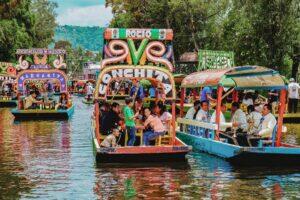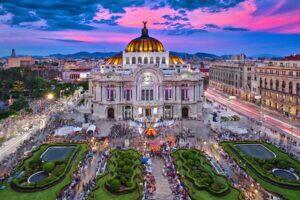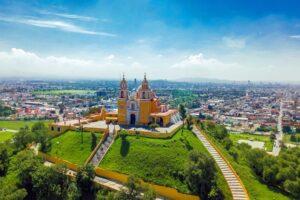Fodor's Expert Review Zócalo
Zócalo literally means "pedestal" or "base"; in the mid-19th century, an independence monument was planned for the square, but only the base was built. The term stuck, however, and now the word "zócalo" is applied to the main plazas in many Mexican cities. Mexico City's Zócalo (because it's the original, it's always capitalized) is used for government rallies, protests, sit-ins, and festive events. It's the focal point for Independence Day celebrations on the eve of September 16 and is a maze of lights, tinsel, and traders during the Christmas season. Flag-raising and -lowering ceremonies take place here in the early morning and late afternoon.
Formally called the Plaza de la Constitución,... READ MORE
Zócalo literally means "pedestal" or "base"; in the mid-19th century, an independence monument was planned for the square, but only the base was built. The term stuck, however, and now the word "zócalo" is applied to the main plazas in many Mexican cities. Mexico City's Zócalo (because it's the original, it's always capitalized) is used for government rallies, protests, sit-ins, and festive events. It's the focal point for Independence Day celebrations on the eve of September 16 and is a maze of lights, tinsel, and traders during the Christmas season. Flag-raising and -lowering ceremonies take place here in the early morning and late afternoon.
Formally called the Plaza de la Constitución, the enormous paved square, the largest in the Western Hemisphere, occupies the site of the ceremonial center of Tenochtitlán, the capital of the Aztec empire, which once comprised 78 buildings. From the early 18th century until the mid-1900s, the plaza housed a market known as El Parián, specializing in luxury goods imported from Asia on the Manila Galleons, Spanish trading ships that crossed the Pacific from the Philippines to Acapulco. And while the Zócalo has seen the rise and fall of governments and movements for seven centuries, many of the rust-red facades that ring the plaza today—save for the first two floors of the emblematic Palacio Nacional and the Cathedral—were only added in the early 20th century, built in the neo-colonial style in fashion following the Revolution.
The Zócalo is the heart of the Centro Histórico, and many of the neighborhood's sights are on the plaza's borders or just a few short blocks away. Even as the Mexican economy has gradually begun to centralize in recent years, the Zócalo remains the indisputable center of the nation.
READ LESS








